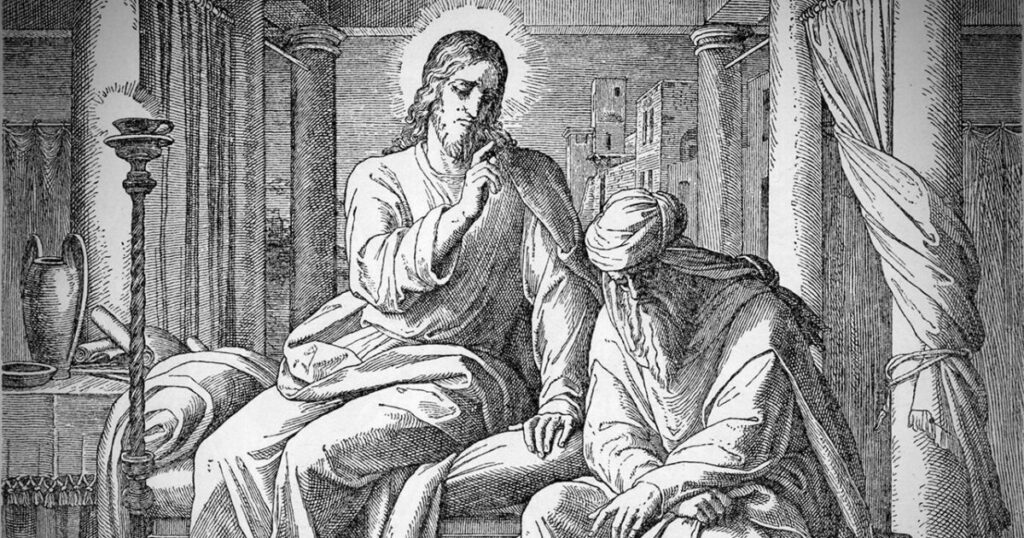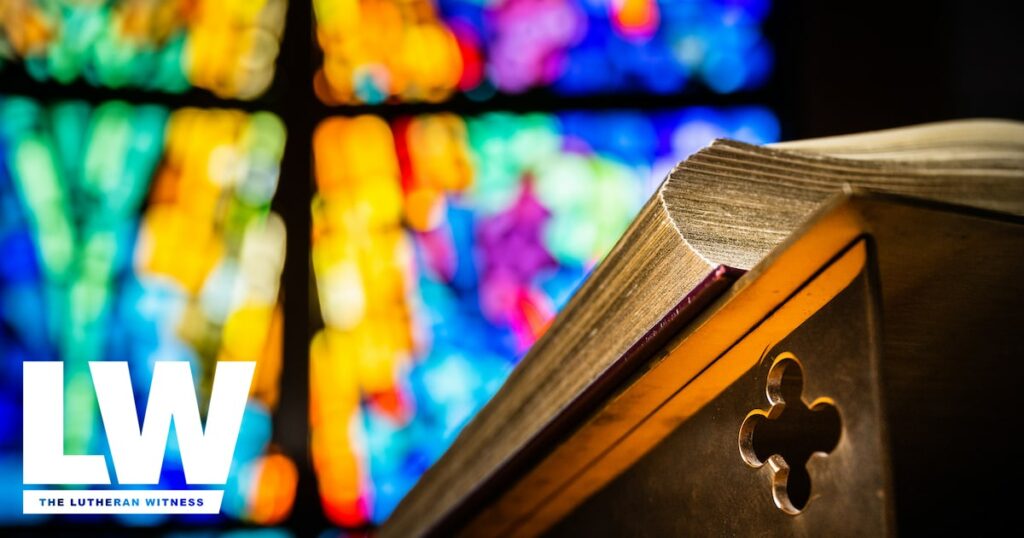by Matthew C. Harrison
Mary was visited by the angel Gabriel. “Behold, you will conceive in your womb and bear a son, and you shall call his name Jesus” (Luke 1:31)! Mary visited Elizabeth, who was also with child (John the Baptizer), and John leapt for joy in the womb! Jesus was born at Bethlehem for the great divine visitation of God in the flesh! Jesus’ first visit to the temple brought consolation and joy to old Simeon: “Lord, now you are letting your servant depart in peace” (Luke 2:29). Jesus visited the temple at age 12 so that He might teach then and teach us today: “Did you not know that I must be in my Father’s house?” (Luke 2:49). And Jesus’ visitation continued throughout His life. He went to Nazareth and preached, “Today this Scripture has been fulfilled in your hearing” (Luke 4:21). He visited Capernaum and healed a man with a demon (Luke 4:35). He went to Peter’s house and healed his mother-in-law, as well as many others (Luke 4:38–39). Jesus was on the move along the Lake of Gennesaret when He began calling His apostles (Luke 5:1–11). Jesus moved about cleansing lepers, healing paralytics and calling an apostle named Matthew. All the way to the cross, Jesus is on the move, visiting this and that place, teaching, consoling, rebuking and encouraging! When He appeared to His disciples after the resurrection, He bade them baptize and teach as they were on the move (“Going, therefore …”; Matt. 28:19, author’s translation).
Prior to the Reformation, bishops weren’t doing much. Some simply held the title for the sake of the property and money associated with the office, and they paid others to do the work. Luther, in his Church Order for Wittenberg (1528), noted that visitation is what bishops (“overseers”) are to do, just as we see Jesus, the Old Testament prophets, St. Paul and Barnabas going about “not for a nice walk” (Luther) but constantly visiting to extend the Gospel, to encourage, to speak the Law, and to forgive and console (Acts 15:30–41).
The Bible and the Lutheran Confessions teach that all pastors are “bishops” or ecclesiastical “overseers.” (“Bishop” is a translation of the Greek word “overseer.”) Visitation is the sacred duty of every pastor or “bishop.” To be sure, the ministry of Jesus, the apostles and St. Paul was translocal — that is, not tied to any one place. Even though a pastor has a local call, he is the visitor of that place. The ministry is peripatetic (the Greek word for “walking around”)! A pastor visits the neighborhood to share the Gospel of Christ. He seeks the lost, just like Jesus (Luke 19:10). He goes to find the lost sheep. He visits the faithful, rejoicing with them when they rejoice, and consoling them and mourning with them when they are sad.
The office of “bishop” (in the sense of an overseer of other pastors) arose in the early centuries of the church. It is not mandated in the Bible, nor of the essence of the church, but rather it is for the well-being of the church. Our LCMS fathers understood this very well, as did Luther. The heart of this office is visitation. That’s why visitation figures so intensely in the Constitution of the LCMS, especially with respect to the offices of president, district president and circuit visitor. A healthy congregation has a visiting pastor. A healthy district has a visiting district president. A healthy circuit has a visiting circuit visitor.
It’s not easy, to be sure, but this is the way we maintain doctrinal unity in the truth of the Holy Scriptures, which is confessed in the Book of Concord. This is how we care for one another. This is how we serve one another. This is how we hold each other accountable to the offices and duties we bear for the sake of the church. This is how we speak a word of Law, if needed. (“Hey, pastor, you’re kinda neglecting your wife and family…”, “Hey, congregation, you have a habit of beating up on your church workers. It must stop.”) Oh, how our church workers and struggling congregations need encouragement!
If you want explicit and helpful examples of visitation, read of Jesus trekking about Palestine and what He does as He moves. Read Paul’s letters. He preaches the Gospel. He speaks the Law as needed. He confronts unbelievers with the resurrected Christ. He consoles. He seeks consolation for himself. He encourages. He sets things in order. He sends people to do what needs to be done in different places. He responds to questions about difficult situations in congregations. He’s much more patient than I would be! “O foolish Galatians!” (Gal. 3:1).
While we speak of “visitation” as the work of pastors and church officials, every layperson ought also to be busy in his or her many vocations, actively encouraging and sharing Christ, loving his or her family and those nearby at work and home. Luther said that all our needs were met by Christ visiting us and taking on our flesh as a babe at Bethlehem. He also said that our neighbor’s need is our vocation to mercy. And he called faith a “busy, active, meddlesome thing”! God grant us all such faith, for the sake of the Gospel and others.
–Pastor Harrison






Jesus said, “By this all people will know that you are my disciples, if you have love for one another.” (John 13:35 ESV)
Those whom you love, you visit if you can.
Very well said! Thank you, Pastor Harrison! Yes – pastors should be modeling for their people what visitation looks like, in the hope that all the saints will visit one another regularly. Deep personal relationship, built upon time with one another, is the foundation of our mobilizing Gospel mission. How desperately our lonely world needs a visit from the people of the risen Jesus!